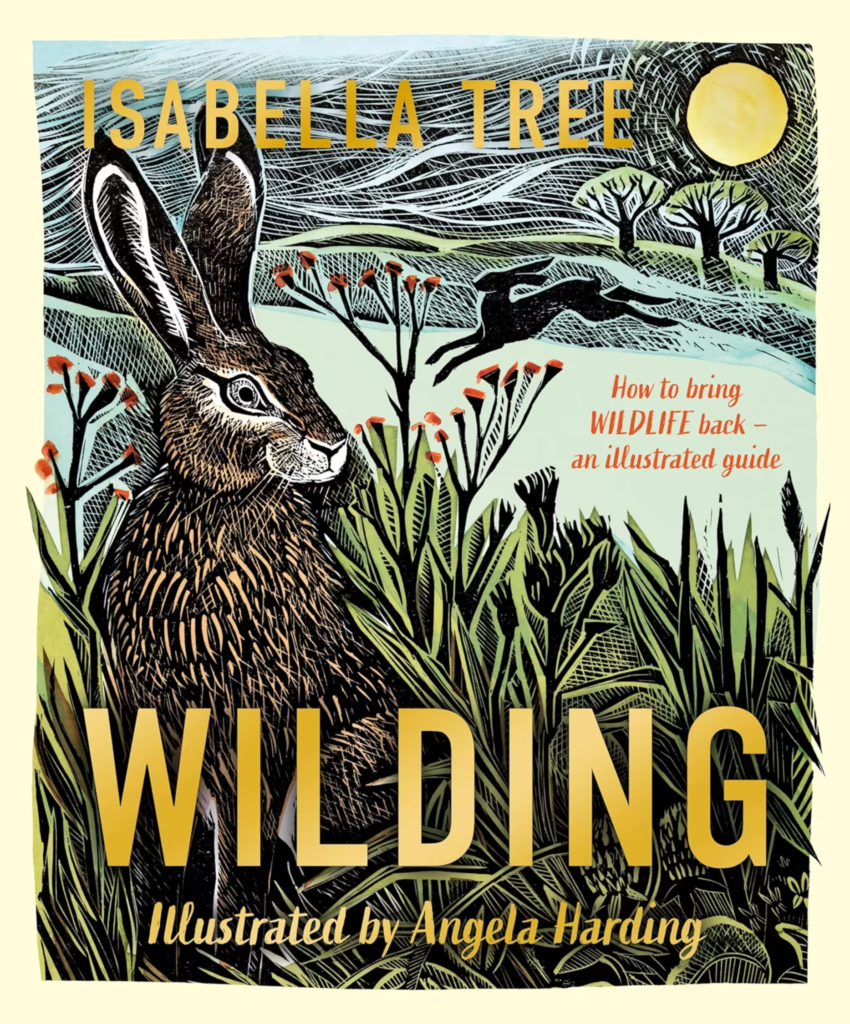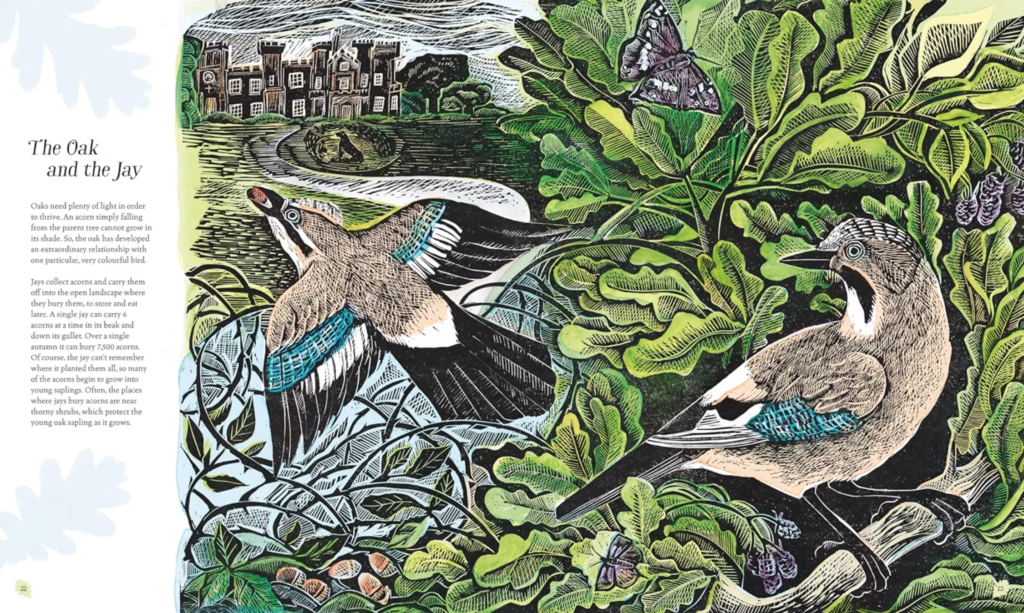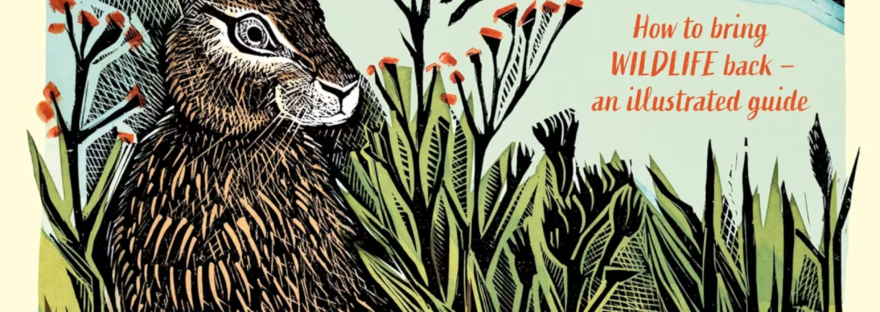Written by Isabella Tree and illustrated by Angela Harding (published by Macmillan Children’s Books)
Did you know that butterflies have long tongues to drink nectar? Or that jays bury their acorns like squirrels, but forget where? Or that a single farm in Sussex reintroduced storks to the UK?

All these facts and much more are available in Wilding: How to Bring Wildlife Back. This new illustrated guide is a pared-back version of Isabella Tree’s adult book Wilding; part fact-file, part memoir about re-wilding their farm at Knepp in Sussex.
This “reimagining” of the original is both informative and inspirational and, with 96 large format pages full of interesting facts and gorgeously illustrated wildlife by Angela Harding, is sure to capture the imagination of readers both young and old.
At the heart of the book is the story of how, over 20 years ago, Isabella and her husband Charlie Burrell decided to stop trying to make a living out of their 3,500-acre farm at Knepp in Sussex, and instead allow the land to revert to the wild.
They didn’t do this alone however – they had the help of the longhorn cattle, Tamworth Pigs, Exmoor ponies, and deer that they introduced onto the land, as well as a more recent establishment of beavers to colonise the restored water systems.
The result has been an explosion of bird-life, wildlife, and insect-life beyond anything they could have imagined. The various animals and plants are all set out in detail and plentifully illustrated throughout the book – it’s a real visual feast!
(We have to confess here that we are familiar with Harding’s illustration style, already having a couple of her advent calendars at home, so were delighted to see her work here!)
It’s a fascinating read, seeing how much of a real, active difference introducing the various animals onto the land has made. Thankfully there is some useful advice for those of us who perhaps don’t have the garden for longhorn cattle and Tamworth pigs!
At the end of the book, Tree sets out ideas for how each of us can do a little bit of rewilding at home, no matter how small our space. Even a humble flowerpot or window box can be turned into a mini wildlife helper with a bit of care and attention.

Knepp welcomes visitors, and the map in the book shows just how extensive it and its footpaths are. Wildland safaris are available, as well as camping, glamping, and cottage accommodation. You can find more information about visiting at the Knepp website.
This is a truly fantastic book which deserves a place in every library and in any home with children or visiting grandchildren, although you won’t be able to resist it yourself either! The layout of the sections and the eye-catching illustrations make it perfect for reading, but also dipping into and browsing – it’s one that we’ll return to over and over.
This is a book that is both enjoyable and educational, and with spring just around the corner, it’s the perfect time to introduce young ones to rewilding and a love of nature!
If you want to find out more about Knepp and what you can do for nature, you can get a copy of Wilding: How to Bring the Wildlife Back at the link below.
(Disclosure: If you buy books linked to our site, we may earn a commission from Bookshop.org, whose fees support independent bookshops.)
Looking for more books about nature? If so, you can see our previous fiction and non-fiction reviews here.

